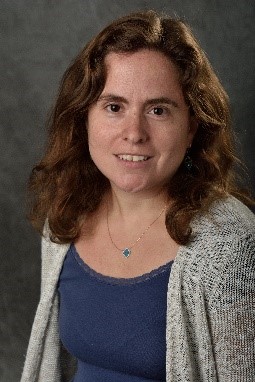Series to highlight women in Signal Processing: Selin Aviyente

 Selin Aviyente received her B.S. degree with high honors in Electrical and Electronics engineering from Bogazici University, Istanbul in 1997. She received her M.S. and Ph.D. degrees, both in Electrical Engineering: Systems, from the University of Michigan, Ann Arbor, in 1999 and 2002, respectively. She joined the Department of Electrical and Computer Engineering at Michigan State University in 2002, where she is currently a Professor and Associate Chair for Undergraduate Studies. Her research focuses on statistical and nonstationary signal processing, higher-order data representations and network science with applications to neurophysiological signals. She has authored more than 150 peer-reviewed journal and conference papers. She is the recipient of a 2005 Withrow Teaching Excellence Award, a 2008 NSF CAREER Award and a 2021 Withrow Excellence in Diversity Award. She is currently serving on several technical committees of IEEE Signal Processing Society and is the vice-chair of IEEE Bioimaging and Signal Processing (BISP) technical committee. She is an Associate Editor for IEEE Open Journal of Signal Processing and Digital Signal Processing.
Selin Aviyente received her B.S. degree with high honors in Electrical and Electronics engineering from Bogazici University, Istanbul in 1997. She received her M.S. and Ph.D. degrees, both in Electrical Engineering: Systems, from the University of Michigan, Ann Arbor, in 1999 and 2002, respectively. She joined the Department of Electrical and Computer Engineering at Michigan State University in 2002, where she is currently a Professor and Associate Chair for Undergraduate Studies. Her research focuses on statistical and nonstationary signal processing, higher-order data representations and network science with applications to neurophysiological signals. She has authored more than 150 peer-reviewed journal and conference papers. She is the recipient of a 2005 Withrow Teaching Excellence Award, a 2008 NSF CAREER Award and a 2021 Withrow Excellence in Diversity Award. She is currently serving on several technical committees of IEEE Signal Processing Society and is the vice-chair of IEEE Bioimaging and Signal Processing (BISP) technical committee. She is an Associate Editor for IEEE Open Journal of Signal Processing and Digital Signal Processing.
We approached Selin with a few questions to learn more:
1. What was the most important factor in your success?
Selin: I think the most important factor in my success is the people I worked with. Ever since my graduate school days, I was lucky to work with great people starting with my Ph.D. advisor Prof. William J. Williams. I learned a lot from him both in terms of how to approach and formulate a problem and how to explore new directions. Since those days, I have been lucky to have great collaborators both within and outside the field and brilliant Ph.D. students. I have especially benefited from collaborations with people outside the field as these collaborations have led me to look at problems from a different perspective. Similarly, I have learned a lot from each of my students and in some cases my students have opened up new research directions that I would not have considered otherwise.
2. Failures are an inevitable part of everyone’s career journey, what is the most important lesson you learned during your career when dealing with failures?
Selin: I think the most important thing I learned about failures during my career is to persevere. If you believe that your idea will contribute to the field, I think it’s very important not to give up. Instead of giving up, one should listen to constructive criticism and use it to further improve the ideas and focus on presenting the ideas in a manner that would be better received. At the same time, it is important to learn from your failures and move on to new directions when needed.
3. Please share your work of societal impact with us.
Selin: My work on complex time-frequency analysis and time-varying phase estimation has made an impact to the field of neurophysiological signal processing and brain connectomics. This method and the resulting algorithms have been incorporated into a publicly available psychophysiology toolbox (http://www.ccnlab.umd.edu/Psychophysiology_Toolbox/). These phase and phase synchrony estimation methods have been used to quantify both inter- and intra-channel phase synchrony and applied to different neurophysiological signals. Some examples include the assessment of brain connectivity in different psychopathologies from electroencephalogram (EEG) and magnetoencephalogram (MEG) signals. As part of this work, I have been collaborating with psychologists and psychiatrists who study different psychopathologies including blast-related mild traumatic brain injury (mTBI), schizophrenia, impulse control disorders and general anxiety disorders. More recently, I have been working in the area of network science with applications to functional brain networks. As part of this work, we have introduced new tools for network analysis ranging from the micro-scale to the macro-scale. In particular, we developed community detection algorithms for weighted dynamic networks for both tracking the changes in network structure and detecting communities in dynamic networks. These algorithms have been useful to identify topological changes to brain connectivity during both resting state and task-based recordings. We have shown that these different brain states can be used as biomarkers for classifying between different subject groups and response types.
4. During these COVID times, the teaching and learning has become online for some time as of now. What do you think are some of the challenges being faced in carrying out quality teaching as well as quality research? Do you have any suggestions for students and faculty?
Selin: I think teaching and conducting research online will be here to stay even after the pandemic is over. I have found the lack of face-to-face interactions to be the most challenging aspect of online teaching. For this reason, I think it is important to utilize different online resources and applications such as discussion boards, messaging apps, e.g. Teams and Slack, to continuously interact with the students. This is important both for peer-to-peer and instructor-to-student interactions. Through my own online teaching, I learned that the online course does not necessarily have to have the exact structure as the traditional in-person course both in terms of how the material is organized/presented and how assessments are carried out. In terms of material presentation, flipped classrooms tend to work better for online courses where the lecture is pre-recorded and the online meeting times are reserved for practice, answering questions and discussions. In terms of assessments, I have observed that more collaborative open-ended project-based assessments work better for online courses compared to written exams. Moreover, the students seem to learn more from these assignments compared to traditional exams.
For conducting research online, I think we in the signal processing field are luckier compared to other researchers as most of our research is computational and can be carried out easily in an online manner. The biggest challenges are lack of face-to-face interactions and the difficulty of collaborating when solving mathematical problems. For these reasons, I think continuously reporting your methodology and writing up your results as you go is more important than ever in this online working environment.

